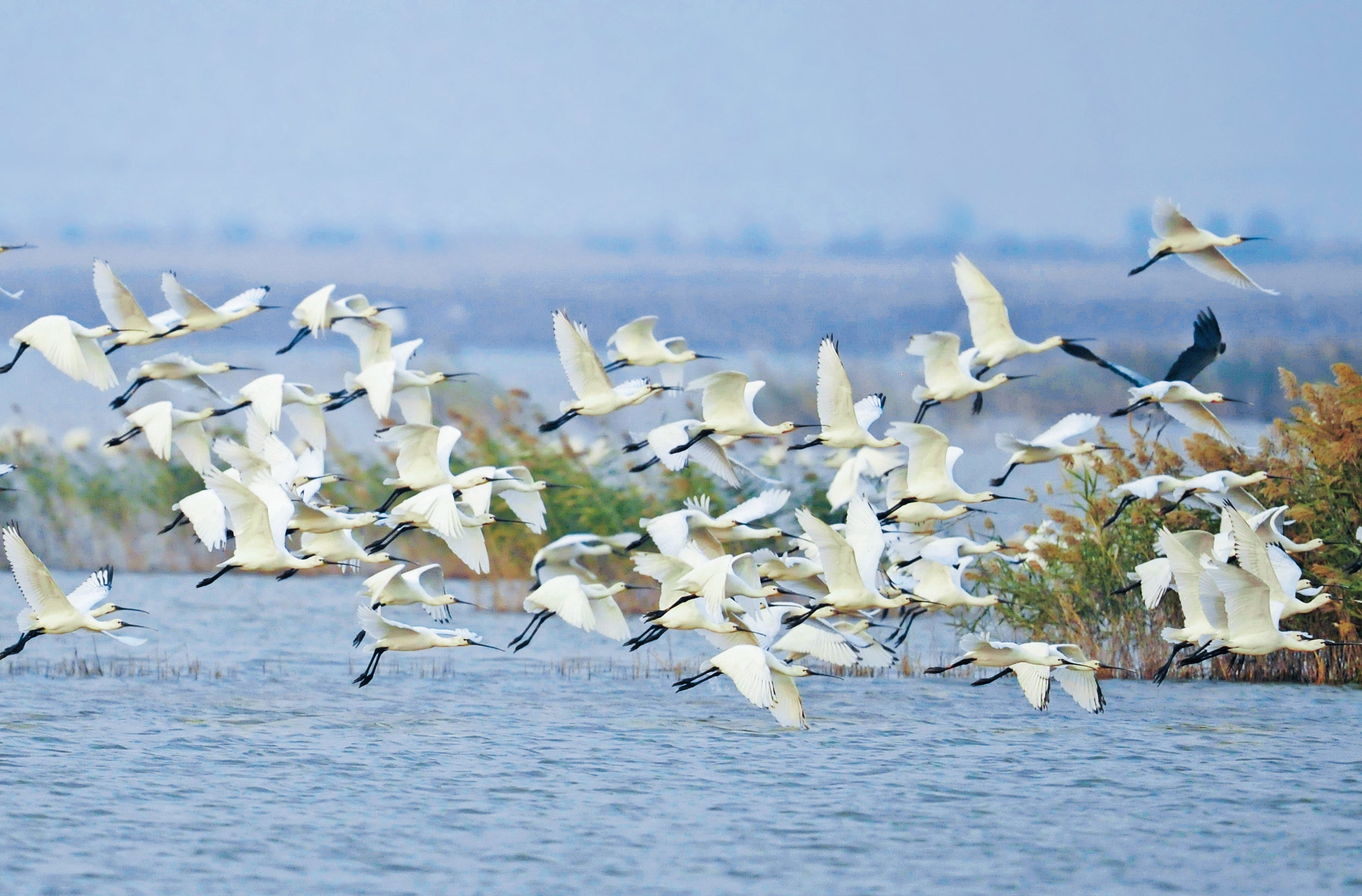Yellow River Delta protection drive stepped up
THE ARTICLES ON THESE PAGES ARE PRODUCED BY CHINA DAILY, WHICH TAKES SOLE RESPONSIBILITY FOR THE CONTENTS

As a chilly spring breeze lightly brushed his tanned face, Wang Lidong walked around the Yellow River Delta National Nature Reserve in Dongying, Shandong province.
He checked water conservation projects and also the water level in the wetlands – part of a day’s work for Wang, who has been involved with protecting the reserve for three decades.
“The environment at the reserve has significantly improved over the years. It is now home to many birds, so all the hard work has been worthwhile,” said Wang, an engineer working on the wetland restoration project at the reserve, which is situated on a large expanse of wetlands in the Yellow River Delta.
The river, China’s second longest, zigzags its way through a plateau blanketed with rich soil. It carries millions of tons of soil east every year, some of it reaching the estuary, where the waterway flows into the Bohai Sea in Dongying, forming the wetlands.
In recent years, the city has spent 1.36 billion yuan (£155 million) to support 17 wetland protection and restoration projects in the delta, including water supplements, cordgrass treatment, and offshore biodiversity conservation, which has helped strengthen the city’s wetland ecosystem.
At the reserve, a large expanse of water stretches out into the distance. Reeds sway in the wind along both sides of a wooden walkway. Aerial views show a series of connected waterways, which resemble slender veins.
Back in the 1980s and 1990s, coastal erosion, seawater encroachment and drought caused the wetlands to shrink. Wang said the delta’s rich wetland ecosystems were also seriously threatened by oil production, industrial waste pollution and land reclamation.
The reserve, established in October 1992 to protect the wetlands, covers about 591 square miles, with the wetlands comprising most of the area.
“As water is crucial to maintaining the healthy ecological system in the wetlands, we have been replenishing water at the site,” Wang said.
He added that the abundance of water in the wetlands will significantly prevent destruction of the ecological system from the encroachment of seawater.
The reserve management committee divided the wetlands into 49 areas based on the growth conditions for animals and plants, ensuring that each area receives the correct amount of water from the Yellow River.
Nurtured by the waterway, the animals and plants are thriving, Wang said.

Work is being carried out in Dongying to restore seagrass beds and native plants growing along waterways in the wetlands, such as Suaeda salsa, a type of herb.
Teaming up with the Chinese Academy of Sciences’ Yantai Institute of Coastal Zone Research, the local government has created an effective way to eradicate Spartina alterniflora, a type of marsh cordgrass found on the estuary coastline that was seriously threatening the habitats of numerous species.
“We cut the grass down before ploughing and flooding the area to prevent it returning,” Wang said.
Spartina alterniflora found on more than 33 square miles of land has been eradicated in past years, resulting in 47 miles of blocked tidal channels being cleared, the management committee’s data show.
Wang said, “Cleaning the Spartina alterniflora has provided natural growth conditions for native biological species.”
In late April, groups of birds were seen resting on ponds on both sides of a road leading to the reserve. Some birds skimmed across the water surface.
Shan Kai, a senior engineer at the reserve, said, “The environment in the delta provides good living conditions for the birds.”
Statistics show that the number of avian species in the delta has risen from 187 in the years after the reserve was established to 373.
Last year, 470 chicks were born to Oriental storks at the reserve, while 315 red-crowned cranes were observed wintering at the wetlands.
“To create a good environment for the birds, we built some small islands on waterways where the Yellow River flows through the wetlands,” Shan said, adding that thanks to these efforts, the delta has become a well-known home to Oriental storks and Saunders’s gulls.

Bookmark popover
Removed from bookmarks